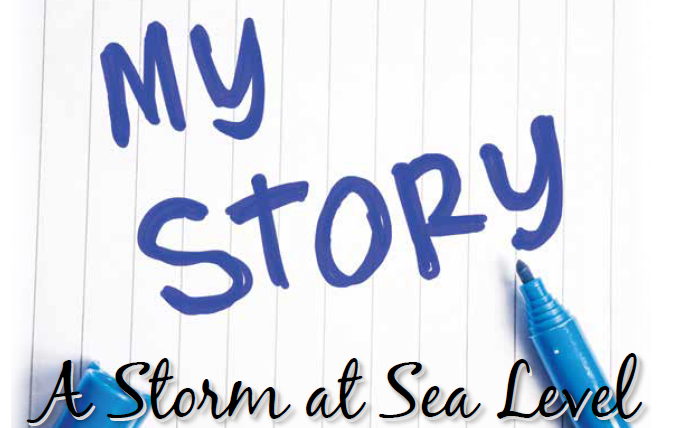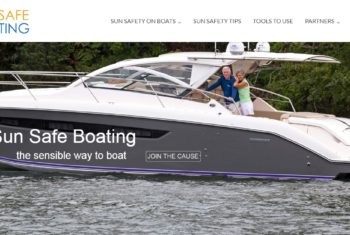A Storm at Sea Level
By Fred Watts
The United States celebrated its bicentennial in 1976 with many special events and activities — one was Operation Sail (commonly called OpSail) on July 4. Tall ships from around the world would gather just south of the Statue of Liberty to sail north into the Hudson River in what promised to be a spectacular display.
Recreational boaters wanting to be close to the festivities were invited to sail, cruise, or paddle to lower Manhattan and then anchor in designated areas. While the parade was scheduled to begin in late morning, boaters were advised to be in place early as the organizers expected numerous vessels. We invited a couple of friends and told them we’d be leaving shortly after daybreak.
That morning, our friends expressed excitement, but also trepidation about choppy waters. The marine weather forecaster predicted sunny weather with light winds all day, so I assured them that they’d be comfortable.
The enormity of OpSail hit us immediately upon leaving our home port. Wow, it seemed everyone with a boat intended to celebrate the 4th like us! The Long Island Sound was jam-packed with boats heading to Manhattan, kicking up an almost continuous wake. Uh-oh, could I keep my calm seas assurance?
Navigating closer towards the Upper Bay, we spotted what seemed to be a never-ending sea of anchored boats. The water was barely visible beneath what that evening’s news would report was about 100,000 vessels! Anxious to join the recreational flotilla, we searched in vain for a spot to drop anchor.
As you can imagine, the boat traffic caused quite a chop, and I was concerned for my passengers’ wellbeing. I decided to head south of the Statue of Liberty and drop anchor, but abandoned that plan as a booming voice from a looming naval battleship warned us, “Move away immediately!”
I did as ordered as rapidly as possible, eventually finding a fairly uncrowded and completely unrestricted spot to drop the hook. Though the people aboard soon stopped shaking from the no-nonsense battleship command, the boat did not. The wakes of passing boats kept us bobbing up and down and rolling from side to side. The harbor clearly was no place for the queasy, but no one complained as the pageantry of the tall ships drew all our amazed attention.
We watched New York City fireboats lead the way with high sprays of red and blue colored water, followed by a procession of magnificent tall ships. As ship after ship passed by, we snapped photos and oohed and aahed, pointing out our favorite sights to each other.
Once the last impressive ship passed out of sight, we were left to focus on the chop, made all the worse by the epic mass exodus. Boats were everywhere, in no apparent pattern, trying (unsuccessfully) to beat the traffic.
Eventually, I maneuvered into the fleeing parade while our guests ducked into the cabin to escape the spray. Heading up the East River, the waterborne traffic was still haphazard; I piloted the boat as I would during storm conditions. Suddenly I heard a shout — one of the jostled passengers had fallen while moving about, injuring her ankle.
With that on my mind, the rough trip back seemed endless; I had time to reflect on what I might have done differently. We could have waited — I didn’t need to be so anxious to join the throng of boaters proceeding in such a hazardous manner. Additionally, I should have instructed passengers to stay seated, secure objects that might come loose, and take all other precautions as I would have in an actual storm. Finally, I learned never to take ownership of anyone else’s comfort level. My answer ever since that day is to report the weather forecast, share that things might get rough on the water even when calm seas are expected, and ask the passengers to decide if they feel at ease about spending the day aboard.



